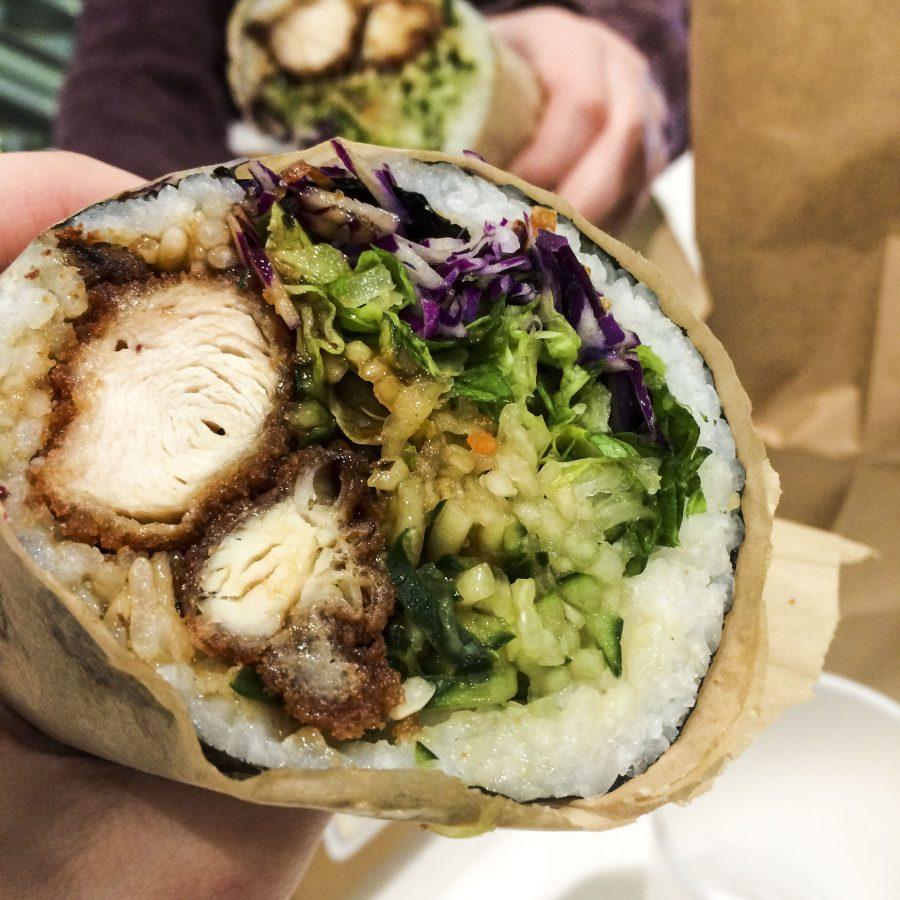Not All Is Bad with American Fusion
The idea of Americanizing food has also turned into the fusion of foods from other cultures, such as this chicken katsu sushi burrito that plays on the idea of a hand roll and burrito.
November 28, 2016
The United States serves as a melting pot of cultures from all corners of the globe. In turn, it has a wide variety of global cuisine, and New York City is a perfect testament to that. Walk down any street in downtown Manhattan, and a multitude of cultural cuisines will unfold before you.
Many of the popular food trends in the U.S. originated from different cultures. This influence is visible in popular and large-scale chain restaurants like Panda Express and Chipotle. However, it is not surprising that these foods are often highly Americanized versions of ethnic foods that do not do the original dishes justice.
Though there are quite a few restaurants and mom-and-pop shops that serve authentic cuisines that pay homage to the culture, Americanized foods that thinly resemble their ethnic roots are far more prevalent. Stern junior Maria Lopez, who is Colombian, doesn’t see much authenticity in New York’s Colombian food.
“There’s a Colombian food stand near campus, and its empanadas are terrible,” Lopez said. “They taste nothing like real empanadas, and I hope no one who is unfamiliar with it tastes these and thinks they really reflect true Colombian food.”
Granted, some dishes do not stick to traditional preparation methods. However, since American culture is itself a fusion of cultures, ethnic dishes with an American twist might also be celebrated as a part of the nation’s diversity. CAS junior Jay Viray, who is of Filipino descent, sees that principle represented in New York’s Filipino food.
“Of course it’s going to be different because it’s being tailored to the average American’s tastes and ways of cooking,” Viray said.
Some students, like CAS freshman Sonam Bhuptani, who is of Indian descent, enjoy both traditional and Americanized cuisines.
“I personally don’t have a problem with seeing Indian dishes become Americanized,” Bhuptani said. “The way I see it, it’s kind of a fusion between American and Indian food, and there are definitely perks to that. I still enjoy authentic Indian food, but I’ve become accustomed to having that at home and having a variation of it at restaurants.”
One of the most popular ways to sample these American variations is to spend a day at Smorgasburg, a food festival in Brooklyn that hosts hundreds of vendors and showcases combinations of foods from different cultures. The festival also breeds new and delicious food trends that cultivate creativity and innovation, such as the ramen burger, ahi-tuna nachos and kimchi-fries.
“What’s the fun in keeping dishes traditional when there’s potential to create a new dish that shares the characteristics of two or more different cultures?” Viray said.
Americanized foods may not always taste similar to the originals, but even those who see Americanization as an insult cannot deny that the trend is a great way to ease people of different cultures into trying dishes they are unfamiliar with.
“Generally speaking, if it wasn’t for the [Americanization] trend, I probably wouldn’t have been introduced to many of the different kinds of cultural foods that I’ve tried,” Viray said.
A version of this article appeared in the Monday, Nov. 28 print edition. Email Tiffanie Hwang at [email protected].


























































































































































